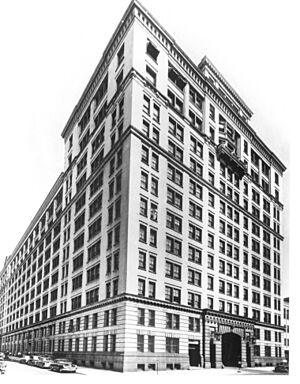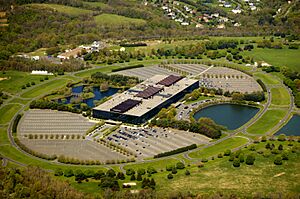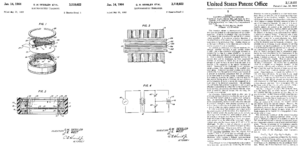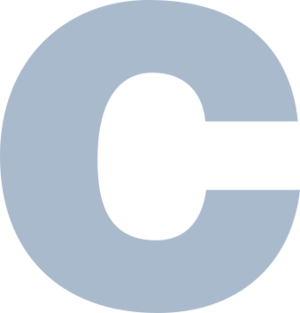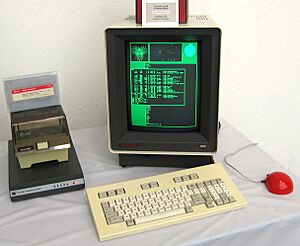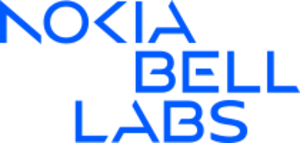Bell Labs facts for kids
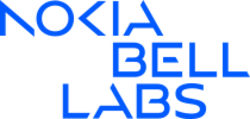
Logo since 2023
|
|

Bell Labs' headquarters in Murray Hill, New Jersey in 2012
|
|
| Subsidiary | |
| Industry | Telecommunication, information technology, material science |
| Founded | January 1925 (as Bell Telephone Laboratories, Inc.) |
| Headquarters | Murray Hill, New Jersey, U.S. |
| Parent |
|
| Subsidiaries | Nokia Shanghai Bell |
Nokia Bell Labs, often called Bell Labs, is an American company that focuses on research and development. It is owned by Nokia, a technology company from Finland. Bell Labs has its main office in Murray Hill, New Jersey, USA. It also has many other labs in the United States and around the world.
Bell Labs used to be part of AT&T. Its scientists and engineers have created many amazing things. These include radio astronomy, the transistor, the laser, and the solar cell. They also developed the Unix operating system and important programming languages like C and C++.
Over the years, people who worked at Bell Labs have won many top awards. These include eleven Nobel Prizes and five Turing Awards.
Bell Labs started in the late 1800s as the Western Electric Engineering Department. It was located in New York City. In 1925, it became Bell Telephone Laboratories. It was owned by Western Electric and AT&T together. In the 1960s, the main office moved to Murray Hill, New Jersey. Many famous scientists and engineers worked there during this time.
Later, AT&T changed its structure. Bell Labs became part of Lucent Technologies in 1996. Then, in 2006, Lucent merged with Alcatel to form Alcatel-Lucent. Finally, Nokia bought Alcatel-Lucent in 2016.
Contents
- Where Bell Labs Started and Grew
- Amazing Discoveries and Inventions
- 1920s: Early Innovations
- 1930s: New Fields of Study
- 1940s: World War II and Beyond
- 1950s: Building the Modern World
- 1960s: Space and Digital Revolutions
- 1970s: The Rise of Computers
- 1980s: New Technologies for Communication
- 1990s: Expanding Digital Frontiers
- 21st Century: Continued Innovation
- 2010s: New Ownership and Speed Records
- 2020s: Looking to the Future
- Awards and Honors
- Other Awards
- Leaders of Bell Labs
- See also
Where Bell Labs Started and Grew
Alexander Graham Bell's Early Research
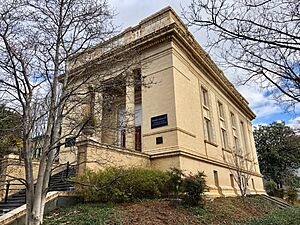
In 1880, Alexander Graham Bell won a prize for inventing the telephone. He used this money to start the Volta Laboratory in Washington, D.C.. He worked with Sumner Tainter and his cousin, Chichester Bell.
This lab focused on studying, recording, and sending sound. Bell used the money he earned from the lab to do more research. He also used it to help people who were deaf. In 1893, Bell built a new building just for the lab. This building is now a famous historical place.
Even after inventing the telephone, Bell mostly focused on his own research. He did not get too involved with the larger Bell System company.
How the Company Was Formed
The first telephone company was the Bell Telephone Company. It was created in 1877. Later, it became part of the American Bell Telephone Company.
By 1899, the American Telephone and Telegraph Company (AT&T) took control of the Bell System. AT&T focused on research for telephone services. Western Electric was the part of the company that made the equipment.
Official Start and New Locations
In 1896, Western Electric bought a building at 463 West Street in New York City. This helped bring together the people who made and designed telephones and other equipment for AT&T.
On January 1, 1925, Bell Telephone Laboratories, Inc. was officially formed. Its goal was to combine all the research and development for the Bell System. Western Electric and AT&T owned the new company equally. It started with 3,600 engineers, scientists, and support staff.
Over time, Bell Labs opened more facilities outside of New York City. These new locations helped them do more outdoor tests and radio communication research. For example, they had sites in Deal, New Jersey for ship-to-shore radio. They also had a large testing area in Whippany for broadcast transmitters.
By the early 1940s, many Bell Labs scientists moved away from busy New York City. In 1967, the main headquarters officially moved to Murray Hill, New Jersey.
Bell Labs had many locations in New Jersey, including Holmdel and Crawford Hill. Today, only Murray Hill and Crawford Hill are still used by Nokia Bell Labs.
The company also had a very large group of employees in Naperville-Lisle, near Chicago. Before 2001, about 11,000 people worked there. Other locations included Indianapolis, Indiana, and Columbus, Ohio. Many of these older locations have since become smaller or closed.
The large Holmdel research lab in New Jersey closed in 2007. This building was famous for its mirrored-glass design. In 2013, a company bought the building to turn it into a mix of businesses and homes. It is now called Bell Works.
Current Bell Labs Locations (2024)
As of 2024, Nokia Bell Labs has research facilities in several countries:
- Antwerp, Belgium
- Budapest, Hungary
- Cambridge, United Kingdom
- Espoo, Finland
- Munich, Germany
- Murray Hill, New Jersey, USA (Global Headquarters)
- Oulu, Finland
- Paris, France
- Shanghai, China
- Stuttgart, Germany
They also have research teams in Sunnyvale, California, USA, and Tampere, Finland.
In December 2023, Nokia announced plans to move its Murray Hill, New Jersey, facility to a new, modern research center in New Brunswick, New Jersey. This move is expected to happen before 2028.
Amazing Discoveries and Inventions
Bell Labs is known as one of the best research places in the world. They have created many groundbreaking technologies. These include radio astronomy, the transistor, the laser, and information theory. They also developed the Unix operating system, the C and C++ programming languages, solar cells, and the charge-coupled device (CCD).
1920s: Early Innovations
In 1924, Bell Labs scientist Walter A. Shewhart created the control chart. This tool helps to make sure that products are made with good quality. This was the start of modern quality control.
In 1926, Bell Labs invented an early system for adding sound to movies. In 1927, a Bell team sent the first long-distance television images. They showed Herbert Hoover, who was the Secretary of Commerce at the time.
In 1928, Harold Black invented the negative feedback system. This system is used in amplifiers to make sounds clearer.
1930s: New Fields of Study
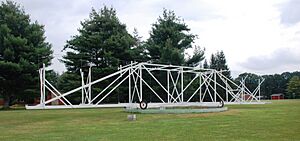
In 1931, Karl Jansky discovered radio astronomy. He was studying static on shortwave radio signals. He found that radio waves were coming from the center of our galaxy.
Bell Labs also made early high-quality recordings of music. In 1933, they even sent stereo signals live from Philadelphia to Washington, D.C.
In 1937, the vocoder was developed. This device could compress speech. Another invention was the Voder, the first electronic speech synthesizer. Also in 1937, Clinton Davisson won a Nobel Prize for showing that electrons can act like waves. This helped create solid-state electronics.
1940s: World War II and Beyond

In the early 1940s, the photovoltaic cell (solar cell) was developed. During World War II, Bell Labs created SIGSALY. This was the first digital system to scramble speech, used by the Allies.
In 1947, the transistor was invented by John Bardeen, Walter Houser Brattain, and William Shockley. This was a huge invention that changed electronics forever. They later won the Nobel Prize for it. In the same year, Richard Hamming invented Hamming codes. These codes help find and fix errors in data.
In 1948, Claude Shannon published his famous work on information theory. This paper explained how information can be measured and transmitted. Bell Labs also created several complex calculators during this decade.
Early Calculators
- Model I (1940): Used for calculations with complex numbers.
- Model II (1943): Introduced error detection.
- Model III (1944): Used for calculating how bullets fly.
- Model V (1946-1947): A general-purpose computer.
1950s: Building the Modern World
The 1950s brought more advances based on information theory, especially in binary code systems. Bell Labs focused on improving the telephone system.
In 1954, the first modern solar cell was invented at Bell Labs. In 1956, TAT-1, the first transatlantic communications cable for phone calls, was laid across the Atlantic Ocean. This was a joint effort by AT&T, Bell Labs, and British and Canadian companies.
In 1957, Max Mathews created MUSIC, one of the first computer programs to play electronic music. Also, Robert C. Prim and Joseph Kruskal developed new ways to design computer networks.
In 1958, Arthur Schawlow and Charles Hard Townes first described the laser.
1960s: Space and Digital Revolutions

In 1960, Ali Javan and his team successfully operated the first gas laser. This laser produced a continuous light beam with amazing accuracy.
In 1962, the electret microphone was invented by Gerhard M. Sessler and James E. West. Also in 1962, John R. Pierce's idea of communications satellites became real with the launch of Telstar. Telstar was designed and built by Bell Labs. It made the first worldwide television broadcast possible on July 23, 1962.
In 1964, the carbon dioxide laser was invented by Kumar Patel. In 1965, Penzias and Wilson discovered the cosmic microwave background. This discovery helped us understand the beginning of the Universe. They won the Nobel Prize for it in 1978.
Bell Labs also explored computer animation in the 1960s. Ken Knowlton invented a computer animation language called BEFLIX.
In 1969, Dennis Ritchie and Ken Thompson created the UNIX operating system. This system was important for telecommunication and general computing. Also in 1969, the charge-coupled device (CCD) was invented by Willard Boyle and George E. Smith. The CCD is used in digital cameras and many other imaging devices. They won the Nobel Prize for this in 2009.
1970s: The Rise of Computers
The 1970s and 1980s saw many computer-related inventions at Bell Labs. These inventions were a big part of the personal computing revolution.
In 1971, Erna Schneider Hoover invented an improved system for managing phone calls in computerized switching systems. She received one of the first software patents for her work.
In 1972, Dennis Ritchie developed the C programming language. C became a very important language for writing software. Also, the AWK programming language was designed by Alfred Aho, Peter Weinberger, and Brian Kernighan of Bell Labs.
In 1976, optical fiber systems were tested for the first time in Georgia, USA.
Bell Labs also made its own microprocessors. In 1977, they started making the BELLMAC-8. In 1980, they showed the first single-chip 32-bit microprocessor, the Bellmac 32A.
1980s: New Technologies for Communication
During the 1980s, the Plan 9 from Bell Labs operating system was developed. This system expanded on the ideas of UNIX. The Radiodrum, an electronic music instrument, was also invented.
In 1980, the TDMA digital cellular phone technology was patented.
In 1982, the Bell Labs Fellows Award was started. This award recognizes scientists and engineers who have made amazing contributions. Ken Thompson and Dennis Ritchie were among the first to receive this honor in 1982.
In 1982, the fractional quantum Hall effect was discovered by Horst Störmer and former Bell Labs researchers Robert B. Laughlin and Daniel C. Tsui. They won a Nobel Prize in 1998 for this discovery.
In 1984, Karmarkar's algorithm for solving complex math problems was developed by Narendra Karmarkar. Also in 1984, AT&T was split up by the government. Bellcore was created from Bell Labs to provide research for the new local phone companies.
In 1985, laser cooling was used to slow down and control atoms by Steven Chu and his team. Bell Labs also won the National Medal of Technology in 1985 for its many contributions to modern communication.
The C++ programming language had its first commercial release in 1985. Bjarne Stroustrup started developing C++ at Bell Labs in 1979.
Arthur Ashkin invented optical tweezers. These devices use laser beams to grab tiny particles, atoms, and even living cells without harming them. He won the Nobel Prize in Physics in 2018 for this work.
In the mid-1980s, Bell Labs developed very reliable fiber-optic communication systems. These systems made it possible to have very fast and almost instant communication across North America.
In the late 1980s, Bell Labs scientists pioneered DSL technology. This allowed very fast internet speeds over regular copper telephone lines, leading to the broadband era.
1990s: Expanding Digital Frontiers
In the early 1990s, Bell Labs explored ways to increase modem speeds to 56K. Early patents for this technology were filed in 1992.
In 1992, Bell Labs scientists provided the key technology for MIMO (Multiple Input Multiple Output). This technology greatly increased the capacity and reliability of wireless systems. MIMO is now a major part of cellular and wireless internet systems.
In 1994, the quantum cascade laser was invented. Also in 1994, Peter Shor created his quantum factorization algorithm, which is important for quantum computing.
In 1996, SCALPEL electron lithography was invented. This technology can print tiny features on microchips. The Inferno operating system was also created by Dennis Ritchie and others.
In 1996, AT&T spun off Bell Labs and most of its manufacturing business into a new company called Lucent Technologies. AT&T kept a small group of researchers who formed AT&T Labs.
In 1997, the smallest practical transistor at the time was built (60 nanometers wide). In 1998, the first optical router was invented.
21st Century: Continued Innovation
The year 2000 was busy for Bell Labs. They developed DNA machine prototypes and invented the first electrically powered organic laser. They also created a large map of cosmic dark matter.
In 2005, Jeong H. Kim became the President of Bell Laboratories.
In April 2006, Bell Labs' parent company, Lucent Technologies, merged with Alcatel to form Alcatel-Lucent. This merger raised some concerns in the United States because Bell Labs worked on defense contracts. A separate company, LGS Innovations, was set up to handle these sensitive U.S. government contracts.
In December 2007, the former Lucent Bell Laboratories and Alcatel Research and Innovation teams merged into one organization called Bell Laboratories.
In 2009, Willard Boyle and George E. Smith won the Nobel Prize in Physics for inventing the charge-coupled device (CCD).
2010s: New Ownership and Speed Records
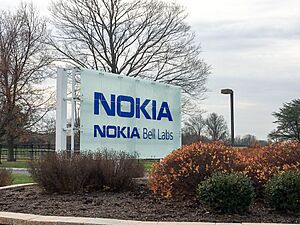
In November 2013, Marcus Weldon was appointed President of Bell Labs. His goal was to bring Bell Labs back to the forefront of innovation.
In May 2014, Alcatel-Lucent announced a new Bell Labs location in Tel Aviv, Israel. This team would focus on 'cloud networking' technologies.
In July 2014, Bell Labs announced a new record for broadband internet speed. Their new technology, called XG-FAST, promised speeds of 10 gigabits per second.
In 2014, Eric Betzig shared the Nobel Prize in Chemistry for his work on super-resolved fluorescence microscopy, which he started at Bell Labs.
On April 15, 2015, Nokia agreed to buy Alcatel-Lucent, Bell Labs' parent company. The deal was completed on January 14, 2016.
In September 2016, Nokia Bell Labs achieved a data rate of one terabit per second in an optical communications test. This was done by improving transmission capacity with a new technology.
In 2018, Arthur Ashkin shared the Nobel Prize in Physics for his work on "optical tweezers."
2020s: Looking to the Future
In 2020, Alfred Aho and Jeffrey Ullman shared the Turing Award for their work on compilers, which they began at Bell Labs.
In December 2021, Nokia reorganized Bell Labs into two parts: Bell Labs Core Research and Bell Labs Solutions Research. Core Research focuses on new technologies for the next 10 years. Solutions Research looks for shorter-term solutions that can help Nokia grow.
On December 11, 2023, Nokia announced plans for a new research facility in New Brunswick, New Jersey. This new building will replace the 80-year-old Murray Hill Bell Labs facility before 2028.
Awards and Honors
Nobel Prizes
Eleven Nobel Prizes have been awarded for work done at Bell Labs:
- 1937: Clinton J. Davisson for showing the wave nature of matter.
- 1956: John Bardeen, Walter H. Brattain, and William Shockley for inventing the first transistors.
- 1977: Philip W. Anderson for understanding the electronic structure of glass and magnetic materials.
- 1978: Arno A. Penzias and Robert W. Wilson for discovering cosmic microwave background radiation.
- 1997: Steven Chu for developing ways to cool and trap atoms with laser light.
- 1998: Horst Störmer, Robert Laughlin, and Daniel Tsui for discovering and explaining the fractional quantum Hall effect.
- 2009: Willard S. Boyle and George E. Smith for inventing the charge-coupled device (CCD).
- 2014: Eric Betzig for his work in super-resolved fluorescence microscopy.
- 2018: Arthur Ashkin for his work on "optical tweezers."
- 2023: Louis Brus for his work on "the discovery and synthesis of quantum dots."
- 2024: John Hopfield for his work in artificial networks for machine learning.
Turing Awards
The Turing Award has been won five times by Bell Labs researchers:
- 1968: Richard Hamming for his work on error-detecting and error-correcting codes.
- 1983: Ken Thompson and Dennis Ritchie for developing Unix.
- 1986: Robert Tarjan for achievements in designing algorithms and data structures.
- 2018: Yann LeCun and Yoshua Bengio for their work in Deep Learning.
- 2020: Alfred Aho and Jeffrey Ullman for their work on Compilers.
IEEE Medal of Honor
The IEEE Medal of Honor is the highest award from the Institute of Electrical and Electronics Engineers. It has been won 22 times by Bell Labs researchers. Some winners include:
- 1946: Ralph Hartley for his work on information transmission.
- 1960: Harry Nyquist for contributions to understanding noise and data transmission.
- 1966: Claude Shannon for his mathematical theory of communication.
- 1967: Charles H. Townes for his contributions to lasers.
- 1971: John Bardeen for his work on transistors.
Other Awards
Bell Labs has also won several other important awards:
- Emmy Awards: Five Emmy Awards for work in digital television, network DVR, fiber-optic cable, the CCD, and media file format standardization.
- Grammy Award: One Technical Grammy Award in 2006 for contributions to recording.
- Academy Award: One Academy Award in 1937 for sound technology used in films.
Leaders of Bell Labs
Here are some of the people who have led Bell Labs as President:
| Period | Name of President | |
|---|---|---|
| 1 | 1925–1940 | Frank Baldwin Jewett |
| 2 | 1940–1951 | Oliver Buckley |
| 3 | 1951–1959 | Mervin Kelly |
| 4 | 1959–1973 | James Brown Fisk |
| 5 | 1973–1979 | William Oliver Baker |
| 6 | 1979–1991 | Ian Munro Ross |
| 7 | 1991–1995 | John Sullivan Mayo |
| 8 | 1995–1999 | Dan Stanzione |
| 9 | 1999–2001 | Arun Netravali |
| 10 | 2001–2005 | Bill O'Shea |
| 11 | 2005–2013 | Jeong Hun Kim |
| 12 | 2013–2013 | Gee Rittenhouse |
| 13 | 2013–2021 | Marcus Weldon |
| 2021– | Thierry Klein (Bell Labs Solutions Research) | |
| 2021– | Peter Vetter (Bell Labs Core Research) |
See also
 In Spanish: Bell Labs para niños
In Spanish: Bell Labs para niños
- Bell Labs Technical Journal—A scientific journal from Bell Labs.
- Industrial laboratory
- George Stibitz—A Bell Labs engineer known as the "father of the modern digital computer."
- History of mobile phones—Bell Labs helped develop cellular phones.
- Sound film—Bell Labs developed the Westrex sound system for movies.


